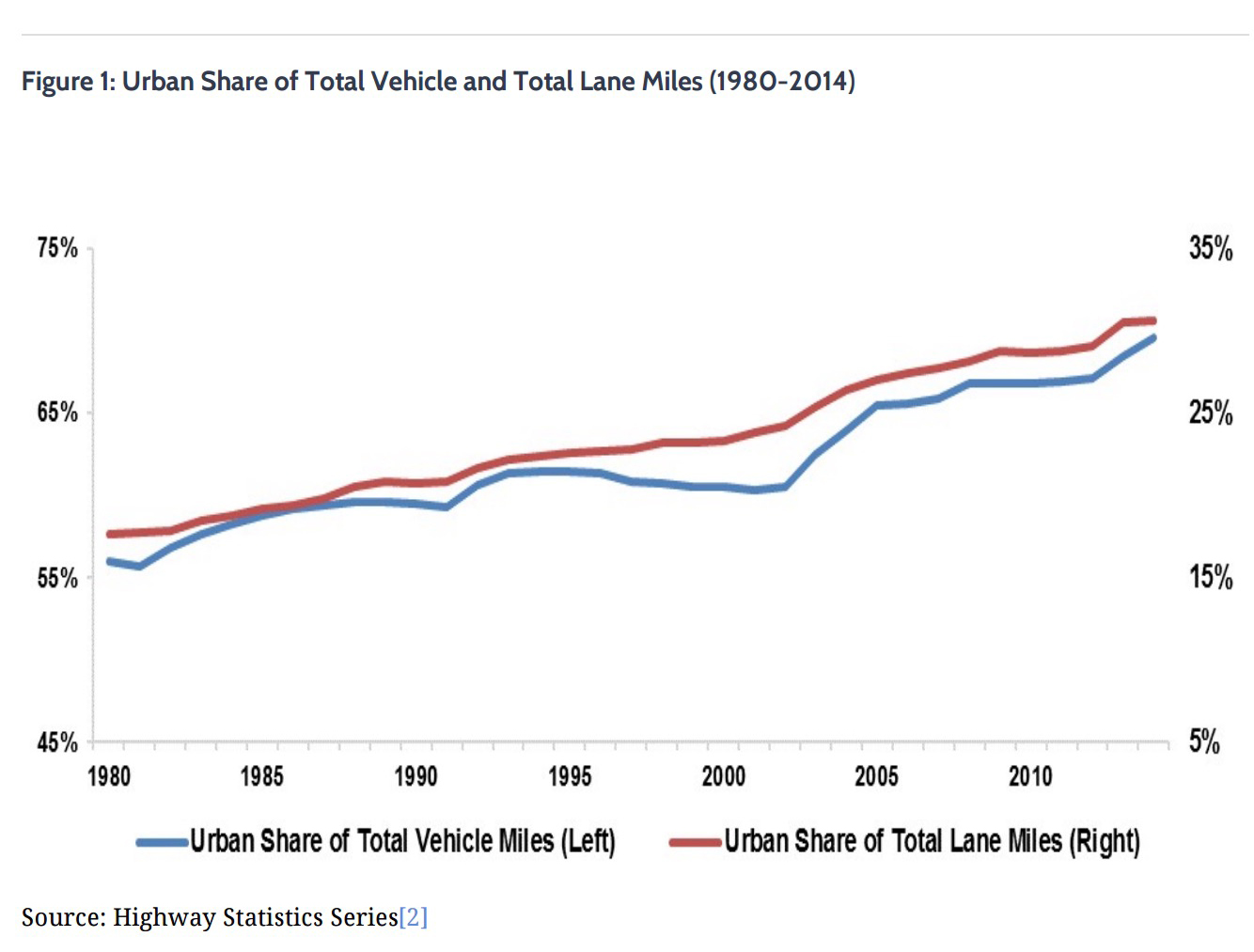AMERICAN ACTION FORUM (AAF)
Summary
- As policy interest in significant new transportation infrastructure investments increases, so do questions about the feasibility of significant private sector funded infrastructure partnerships.
- Urban areas are likely to benefit from increases in private sector contributions to infrastructure spending due to higher road usage.
- In 2014, urban roads had the highest traffic volume with 70 percent of total vehicle miles on only 31 percent of total lane (physical road) miles.
- In 2014, 19.9 percent of urban roads and 3.4 percent of rural roads did not meet FHWA standards for road quality.
- Reducing the congestion of roads with heavy truck volume would have national economic benefits since goods transported by truck accounted for more than 70 percent of the value and weight of all freight shipments in 2012.
Introduction
Modernizing America’s infrastructure is a key plank in the next Administration’s economic platform, and transportation infrastructure should be central to this effort. The case can be made that American roadways are inadequate, even as there are more vehicles on the road than ever. The consequence is congested roads and poor road quality. However, President Trump’s plan relies heavily on private sector finance; specifically leveraging less than $200 billion in federal funds for $800 billion in private funds. (Then-candidate Hillary Clinton similarly proposed establishing an infrastructure bank involving the private sector.) Is it feasible to modernize the surface transportation network without greater taxpayer involvement?
One apparent limitation is the need for a dedicated revenue stream to provide the private sector returns to fund an infrastructure project. Upon reflection, however, the most likely candidates for increased private sector participation are the urban roads bearing the most vehicle traffic, and thus having the potential to generate enough toll or congestion-pricing revenues to offset costs.
This paper puts some empirical meat on this observation, using road transportation data to identify the seemingly most promising locations for additional private participation. We also document those places that currently benefit from private sector capital financing.
To preview the results, we find that taxpayer seed money looks most likely to draw private sector financing of congested roadways in urban areas, and that there is likely a national transportation benefit from those investments. However, we also document some connectivity priorities that would best be financed using traditional taxpayer approaches.
Urban Road Usage
We begin with a snapshot of the national-level data. Figure 1 shows the underpinnings of the fact that urban roads are consistently more congested than rural roads. Urban roads contribute to 70 percent of total vehicle miles but only 31 percent of total lane miles (or total road length and lane count of roadway). This high ratio of vehicle miles to lane miles is explained by the fact that a clear majority of the population lives in urban areas; the urban population was 80.7 percent of the total population in 2010.
In 34 years, the urban share of total driving increased 14 percentage points. The increase in demand for urban roads in turn compelled the urban share of total lane miles to increase 13 percentage points. The increase in urban lane miles will likely continue if current proposals are enacted and the construction of new routes and the expansion of old roads occurs.
However, not all urban traffic is equal and congestion is not uniform. Thus, areas with the highest road congestion will benefit the most from investment, and these are the most attractive areas for private sector resources and management.
…
Conclusion
Increased private sector involvement in federal infrastructure can be beneficial if the projects align with national connectivity and broad ranging benefits. That said, urban areas are the most attractive for private sector involved projects. The private sector alone cannot make the necessary improvements to the nation’s infrastructure problems but can be a powerful tool if employed correctly.
Download full version (PDF): Practicality of Private Sector Funded Infrastructure
About the American Action Forum
www.americanactionforum.org
AAF provides data-driven insight to today’s defining domestic policy challenges, utilizes both in-house policy experts and a broad network of outside experts, and deploys modern communications approaches to express ideas and effectively engage policymakers, thought leaders, academics, media, and the general public.
Tags: AAF, American Action Forum, PPPs, Public-Private Partnerships, Trump Administration, urban







 RSS Feed
RSS Feed